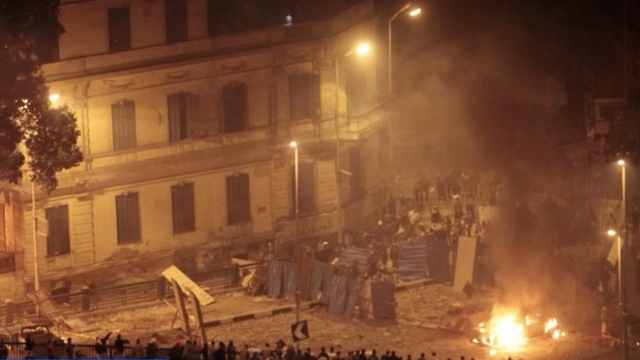Updates from the front lines look a lot different these days.
"In World War II people had to sort of cable their stories back or sometimes dictate them over the phone, and people were getting those the next day in the newspaper," explained Peter Adams, senior vice president of research and design for the News Literacy Project.
During modern warfare, there are two battles: the fight from the front lines, and the fight on misinformation online.
"It used to be that you needed to have a camera crew and you need to have a professional reporter. Now people are reporting with their cellphones," said Kurt Braddock, assistant professor at the School of Communication at American University.
Experts say sometimes that's a good thing, and sometimes it leads to social chaos.
"With the Arab Spring in 2011, 2012, we saw Twitter being used by just regular citizens to show what was going on in the Arab world at that time. It was very organic and a lot of the information that was going around was true," said Braddock.
"There are also a lot of people on social media that are peddling footage and photos out of context, making false claims, manipulating images, fabricating images now with AI," said Adams on recent conflicts.
The speed of social media lends itself to mis- and disinformation over where exactly the news is coming from and who is posting — for example, in the confusion over who bombed a Gaza hospital in October, when some pointed to Israel and others to militant groups; or videos claiming to be evidence of recent attacks, that were actually from past incidents.
A recent report from Bellingcat found images all over social media from completely different wars wrongly attributed to the Gaza conflict.
Misinformation is often spread by everyday people hoping to shed insider knowledge of an event or to push their own beliefs. Disinformation is purposely spreading lies, sometimes through state-sponsored media.
"Atrocities in certain Ukrainian cities, for example, high civilian casualties — the Russian propagandists and state-sponsored media tried to sort of draw that into doubt, pushing conspiratorial claims about actors, about Ukrainians faking deaths, which were entirely baseless," said Adams.
Competing with the speed of social media or state-sponsored outlets is tough for traditional newsrooms who may have standards for what's published and what isn't. But experts say transparency and taking extra steps are necessary.
"These organizations, the professional news organizations, they're going to do more damage by spreading misinformation and having to walk it back than they would if they had waited and verified later," warned Braddock.
"It's up to news organizations and individual journalists to include those kinds of explainers in their coverage to help people understand the steps they took to verify a detail, to help people understand style choices, why a certain word is used, or choices around imagery,"
Everyday people have a role too — like considering the source before sharing.
"Have a look to see who the original poster is. See what their political leanings might be. Do they have any kind of reason to spread information that might be false?" said Braddock.
By doing their research, the everyday citizen becomes one more fighter in the war on misinformation.
SEE MORE: AI, misinformation risks will increase ahead of election, experts warn
Trending stories at Scrippsnews.com



